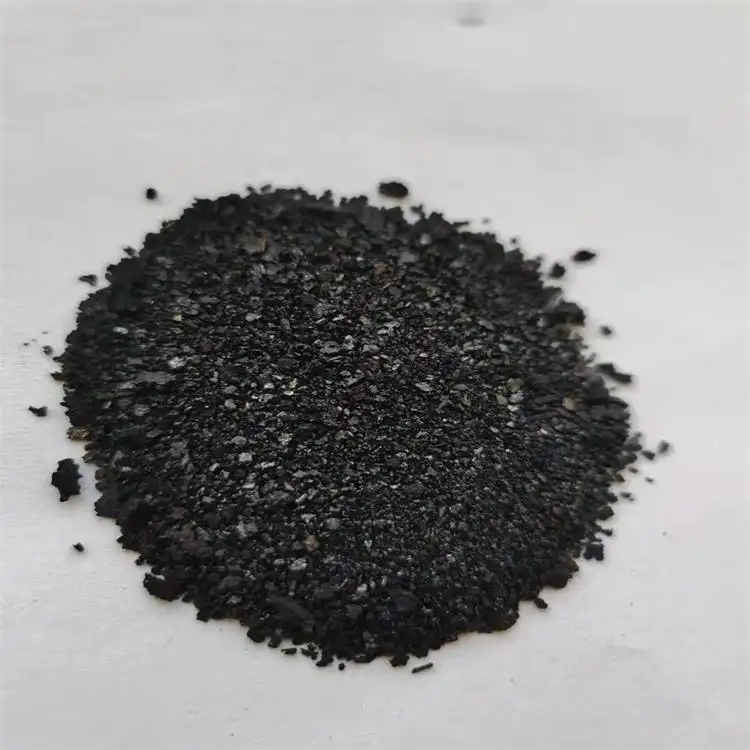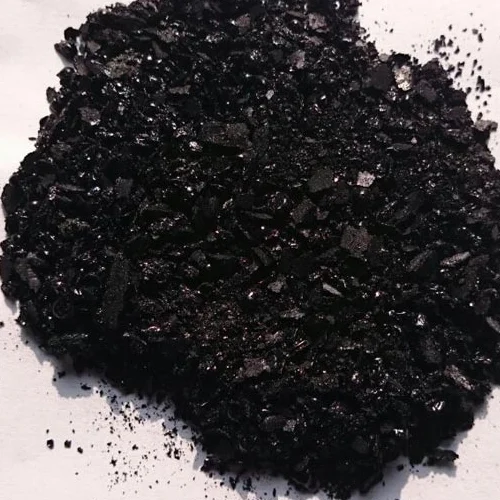Sulfer Black – High Quality Dye for Textiles Top Sulfer Black Manufacturers & Exporters
- Introduction to sulfer black
and its industrial significance - Technical advantages and market data
- Comparison of sulfer black exporters and manufacturers
- Customization options for diverse industrial needs
- Application cases and global usage trends
- Future trends in sulfer black products
- Conclusion: The evolving landscape of sulfer black

(sulfer black)
Introduction to Sulfer Black: The Industrial Dye Revolution
Sulfer black stands as one of the most significant dyestuffs in today's textile and apparel industries. It is prized for its robust coloring properties, cost-effectiveness, and consistent performance in mass dyeing applications. Whether in the manufacturing of jeans, casual wear, industrial fabrics, or high-grade cotton materials, sulfer black has established itself as an essential black dye, accounting for over 55% of global black dyestuff consumption in cotton dyeing.
Likewise, the worldwide supply chain incorporates not only leading sulfer black exporters but also innovative sulfer black manufacturers focusing on sustainability and customization. With the drive towards eco-friendly practices, sulfer black product refinement remains a dynamic field engaged in continuous research and development, ensuring compliance with global regulatory demands.
Technical Advantages and Market Data
The demand for high-performance coloring solutions in textiles has steered the evolution of sulfer black, prompting developments targeting dye fastness, reduction in effluent load, and superior yield. Sulfer black offers remarkable technical benefits:
- High tinctorial strength: Enables deep, uniform shades with excellent coverage.
- Substantivity: Easily bonds with cellulose fibers, facilitating exhaustive dyeing with less wastage.
- Good wash and light fastness: Finished textiles resist fading under sunlight and multiple wash cycles.
- Low production cost: Sulfer black ranks as one of the most economically viable options for large-scale black dyeing.
Market data reflects the scale of sulfer black adoption:
- Global sulfer black consumption (2023): Approx. 170,000 metric tons
- Top importing regions: Asia-Pacific (60%), Europe (20%), Americas (15%), Others (5%)
- Annual growth rate: 3.7% (2021-2023, CAGR)
- Major end-user segments: Textiles (80%), Leather (12%), Paper (5%), Other industries (3%)
Comparison of Leading Sulfer Black Exporters and Manufacturers
Leading sulfer black manufacturers and exporters differ in production capacity, product range, quality assurance, environmental certifications, and supply chain sophistication. The table below compares major global players based on available quantitative metrics and certifications:
| Company | Annual Output (MT) | Main Product Range | ISO Certification | Eco Compliance | Lead Time (Days) | Export Markets |
|---|---|---|---|---|---|---|
| Croma Chem Industries | 26,000 | Sulfer Black BR, Sulfer Black 1 | ISO 9001, ISO 14001 | REACH, OEKO-TEX® | 14-21 | Asia, Europe, LatAm |
| China Dyes Co. Ltd. | 38,500 | Sulfer Black 2, HD variants | ISO 9001 | GOTS, ZDHC | 10-20 | Global |
| Indigo Texchem Pvt. Ltd. | 17,300 | Sulfer Black Liquid, Granular | ISO 9001, ISO 45001 | REACH, bluesign® | 17-25 | EU, US, Africa |
| EcoDye Vietnam | 8,900 | Sulfer Black BRF, Specialties | ISO 14001 | OEKO-TEX®, GOTS | 20-28 | SEA, MidEast |
When selecting suppliers, buyers frequently weigh not only the technical consistency of sulfer black products but also the extent of environmental stewardship demonstrated by these manufacturers. ISO and eco certifications, as seen above, are increasingly non-negotiable credentials in supplier selection.
Customization Solutions for Industrial Needs
Sulfer black caters to a wide spectrum of process requirements and product specifications in the textile, leather, and paper industries. Modern manufacturing units offer robust customization capabilities such as:
- Granular, powder, and liquid forms for tailored solubility and handling properties.
- High-purity sulfer black grades optimized for less residue and effluent in dye baths.
- Special fastness variants designed for outdoor or high-wash applications, meeting strict export norms.
- Pre-reduced formulations to streamline dyeing operations and enhance machine efficiency.
- Eco-certified blends to support green labeling and compliance with restricted substances lists.
Application Cases and Global Usage Trends
Sulfer black continues to set industry standards in demanding environments. Real-world application cases underline its versatility:
- Denim Manufacturing: 64% of blue-black and grey denim globally relies on sulfer black for base shade stability and cost-performance. Leading mills report up to 18% water savings using liquid sulfer black formulations.
- Protective Workwear: Sectors such as mining and mechanical services prefer sulfer black-dyed fabrics for their anti-fade resilience and wash performance—garments typically withstand 50+ industrial launderings.
- Paper Industry: Specialty packaging and labels utilize sulfer black for its deep, matte finish and compatibility with recycled fibers.
- Sustainable Fashion: Brands in Europe and North America are increasingly turning to GOTS- and OEKO-TEX®-compliant sulfer black products, boosting eco-friendly fashion segment adoption by 22% year-on-year since 2020.
- Leather Goods: Premium luggage and accessories manufacturers leverage sulfer black for both shade depth and migration resistance, ensuring product longevity even with frequent use.
Future Trends in Sulfer Black Products
Industry momentum is driving significant advances in sulfer black production technology. Key trends shaping the next decade include:
- Green Chemistry: Adoption of waterless dyeing systems, biological reducers, and improved wastewater management techniques. Projections indicate a possible 40% reduction in total dyeing effluent by 2030 for compliant suppliers.
- Digital Traceability: Next-gen batch monitoring and digital product passports will enhance supply chain transparency and facilitate responsible sourcing of sulfer black.
- Functional Upgrades: Integration of anti-bacterial or UV-stable additives to create multi-functional finishes, responding to the growing outdoor fabric and technical textile sectors.
- Smarter Logistics: Manufacturers are implementing AI-driven demand forecasting and rapid shipping circuits to cut average global lead times from 20 to 10 days by 2028.
- Circular Economy: Upcycling and closed-loop dye recovery processes will enable manufacturers to meet increasingly stringent global standards and meet environmentally conscious buyer demands.
Conclusion: Sulfer Black Exporters and the Evolving Supply Chain
The journey of sulfer black from a classic industrial dye to a cutting-edge, sustainable colorant highlights the ongoing innovation and commitment among suppliers and sulfer black exporters worldwide. Selection of the right sulfer black product remains a calculated decision influenced by technical performance, compliance, supply chain robustness, and customization possibilities. With mounting pressure for greener, smarter solutions, successful manufacturers are those who lead not only in output but also in responsible sourcing and rapid adaptation to global trends. In the coming years, the collaborative efforts of manufacturers, exporters, and end-users will further refine what sulfer black can offer, cementing its place at the core of worldwide industrial coloring technologies.

(sulfer black)
FAQS on sulfer black
Q: What is Sulfer Black?
A: Sulfer Black is a widely used dye in the textile industry, known for its deep black coloration. It offers good color fastness on cotton fabrics. This dye is especially popular for dyeing jeans and other cotton garments.Q: Who are the leading Sulfer Black exporters?
A: Leading Sulfer Black exporters are mostly based in China and India. These companies supply high-quality dyes to textile industries worldwide. You can find certified exporters through trade platforms and industry directories.Q: What products use Sulfer Black dye?
A: Sulfer Black dye is commonly used for coloring cotton fabrics, especially denim and casual wear. It is also used in yarn dyeing and certain blended textiles. The product ensures a durable, rich black shade.Q: How can I find reliable Sulfer Black manufacturers?
A: Reliable Sulfer Black manufacturers can be found by checking certifications, client reviews, and years of industry experience. Many have websites detailing their products and production processes. Attend trade shows or explore B2B platforms for direct contact.Q: What factors should I consider before purchasing Sulfer Black products?
A: Key factors include dye purity, color fastness, compatibility with your fabric, and manufacturer reputation. Always request technical data sheets and samples for testing. This ensures you select the best Sulfer Black product for your needs.-
The Timeless Art of Denim Indigo Dye
NewsJul.01,2025
-
The Rise of Sulfur Dyed Denim
NewsJul.01,2025
-
The Rich Revival of the Best Indigo Dye
NewsJul.01,2025
-
The Enduring Strength of Sulphur Black
NewsJul.01,2025
-
The Ancient Art of Chinese Indigo Dye
NewsJul.01,2025
-
Industry Power of Indigo
NewsJul.01,2025
-
Black Sulfur is Leading the Next Wave
NewsJul.01,2025

Sulphur Black
1.Name: sulphur black; Sulfur Black; Sulphur Black 1;
2.Structure formula:
3.Molecule formula: C6H4N2O5
4.CAS No.: 1326-82-5
5.HS code: 32041911
6.Product specification:Appearance:black phosphorus flakes; black liquid

Bromo Indigo; Vat Bromo-Indigo; C.I.Vat Blue 5
1.Name: Bromo indigo; Vat bromo-indigo; C.I.Vat blue 5;
2.Structure formula:
3.Molecule formula: C16H6Br4N2O2
4.CAS No.: 2475-31-2
5.HS code: 3204151000 6.Major usage and instruction: Be mainly used to dye cotton fabrics.

Indigo Blue Vat Blue
1.Name: indigo blue,vat blue 1,
2.Structure formula:
3.Molecule formula: C16H10N2O2
4.. CAS No.: 482-89-3
5.Molecule weight: 262.62
6.HS code: 3204151000
7.Major usage and instruction: Be mainly used to dye cotton fabrics.

